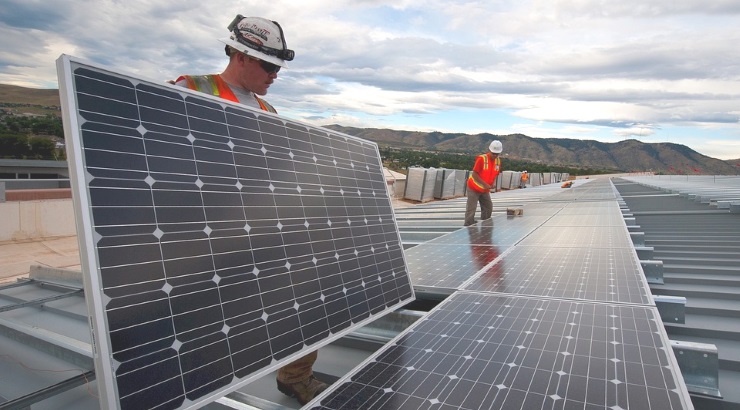Industry News
Analysts See a Dim 2018 for Global Solar Market
Analysts predict a sharp drop in the number of solar installations this year.

The global solar market is facing tough times with analysts predicting a sharp decline in the number of solar installations this year.
Goldman Sachs Group Inc. said in a research note on July 18 that it expects global solar installations to drop by 24 per cent in 2018, marking the first-ever contraction.
Goldman is not alone. Credit Suisse Group AG is predicting a 17 per cent drop, while Bloomberg NEF sees a 3 per cent fall.
China is greatly responsible for the slowing demand for solar installations after it took 20 gigawatts of solar projects offline in May to curb financial aid to developers after record installations last year.
The clampdown pulled global installations down to 75 gigawatts from 99 gigawatts last year, Bloomberg reported, quoting Goldman analyst Brian Lee.
“Lowering our coverage view to cautious, we believe oversupply is set to continue in the near-to-medium term as demand from the solar markets remains tepid,” Lee said.
Goldman expects supplies across the entire supply chain to rise by 12-32 per cent, with big increases in the segment that manufactures individual solar cells. This will further complicate matters for solar equipment dealers.
“To put this into perspective, at current 4-4.5 g/W conversion rates, this would imply 25 to 35GW of new supply potential vs. what we now forecast to be a roughly 25GW decline in year-on-year demand,” Goldman said.
The company forecasts that solar modules and cells will fetch about 15 to 30 per cent less than they did for manufacturers last year.
In June, Goldman Sachs predicted a 40 per cent drop in sales volumes in China – a huge decline for a country that accounts for half of the global market for solar equipment.
U.S. tariffs on imported panels and modules are expected to result in drops in demand in the United States, India, and Japan.
In February, the U.S. government implemented tariffs of up to 30 per cent on Chinese solar panel imports – its first safeguard tariffs in 16 years – saying the products had “seriously injured” U.S. manufacturers.
RELATED: Kenya’s Largest Solar Park Goes Live in Garissa County
Such high tariffs have practically barred Chinese manufacturers from the U.S. market. Already, solar casualties of the America-China trade conflict are emerging.
Mid-last month, Norway’s REC Silicon posted a quarterly pre-tax loss of $374 million for the second quarter, compared with a $60 million profit the previous quarter, according to Reuters.
The company said the loss was occasioned by the “market disruption from the curtailment of solar incentives in China, as well as continued trade barriers that prevent access to primary markets inside China”.
The projections have sent shockwaves across the market, with most solar stocks falling.
JinkoSolar Holding Co., the world’s largest panel maker, is quickly sliding towards its 52-week low of $11.48, while the Bloomberg Intelligence Global Large Solar index has recorded a significant decline.
But even with a weakening market, Chinese manufacturers raised production in the first half of 2018. This happened while the total installed generation remained unchanged compared to the same period of last year, China Photovoltaic Industry Association Vice-Chairman Wang Bohua said on July 26.














